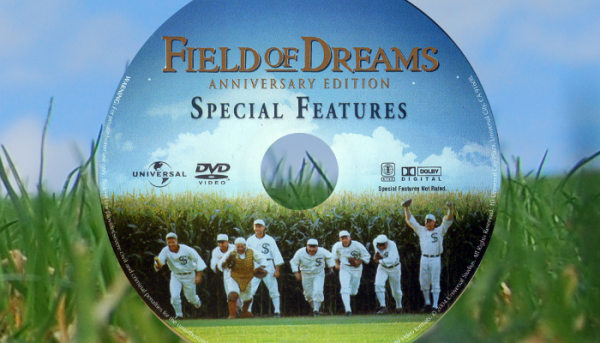
The hardest part of writing a story isn’t deciding what to add–it’s deciding what to subtract. No writer gets it right the first time. There’s always something to rearrange, combine, or tweak. Every story needs a little nip, tuck, or sometimes wholesale amputation.
But, how does a storyteller determine what stays and what goes? What’s the thought process behind story editing choices? I found answers to such questions in a delightfully unexpected place: a DVD’s bonus features.
I had just finished watching the movie Field of Dreams and found myself longing for a little more, “If you build it, he will come.” As I returned the movie’s disc to its case, I noticed a second one labeled, “Field of Dreams Anniversary Edition Special Features.” Two of its table of contents entries sounded interesting:
- Deleted Scenes: Newly discovered and never-before-seen
- Bravo’s From Page to Screen: Field of Dreams A 48-minute documentary on making W.P. Kinsella’s novel, “Shoeless Joe”, into a film.
I found this resource especially useful because of a rare combination: Phil Alden Robinson played the role of screenwriter and director. The fact that the same person converted a dense, 250-page book into a scant 100-page screenplay, and then cut 200 hours (400,000 feet) of film into a one-hour-forty-minute feature length film, offered an unique story-editing perspective.
Robinson explained that Shoeless Joe was the only book that he’d ever read in one sitting, actually staying up all night until he finished it. However, he also explained how his love for the book hurt his efforts to adapt it. At one point, so guilt-ridden over his story-surgery, Robinson wrote an apology to W.P. Kinsella. While W.P. appreciated the sentiment, he congratulated Robinson on a beautiful adaptation.
“There were scenes in this book that I refer to as cul de sacs,” Robinson said, “things that didn’t advance the plot. Those were the first things that I cut. The world’s oldest living Cub. The twin brother. And so you have to be ruthless. I just felt–I gotta move those aside and focus on Ray’s story. How does Ray get from the beginning to the end?”
The “Deleted Scenes” chapter is particularly valuable for those familiar with the movie. The ability to see how those scenes would have changed the movie offers a front row seat in the editing bay. For example, Robinson admitted that the only reason one scene existed was to make the audience laugh. He cut it because they didn’t need a laugh at that time in the movie. Or, describing why one scene didn’t make it, he said, “It was actually a very nice little scene, but again when we cut the film together, we realized that we just didn’t need it. We wanted to kind of move the story forward.”
But Robinson’s most impactful insight came from his brutal self-honesty.
“As with any movie, there are a lot of scenes you shoot that don’t wind up in the final cut of the film…There’s a reason that all of these are in the script and a reason why all of them are out of the movie…because either they’re not written right or they weren’t directed right and so I’ll cop to the problem.”
Robinson’s honest self-assessment reminds us that the story isn’t about beautifully written words or stunning scenes shot at Magic Hour. It’s about serving the audience. Identifying cul de sacs and moving the story along requires story creators to put their egos aside and make painful choices.
So, are you looking for some inspiration for your own business story editing? Wipe the dust off of a favorite DVD and look for its “Special Features.” It just might open a window into the mind of a story editor.
Sources used in this post:
Field of Dreams. DVD. Directed by Phil Alden Robinson. 1989; Universal City, CA: Universal Studios, 2004